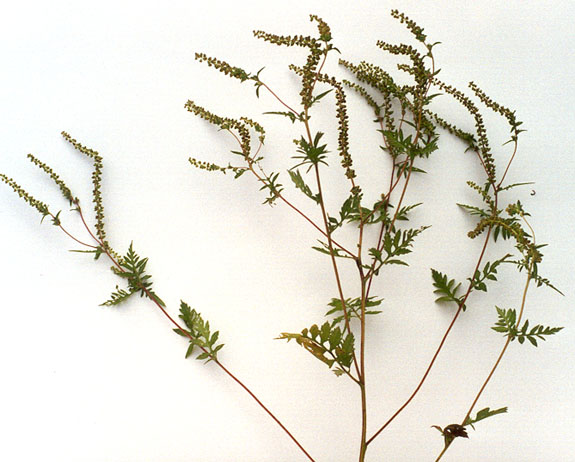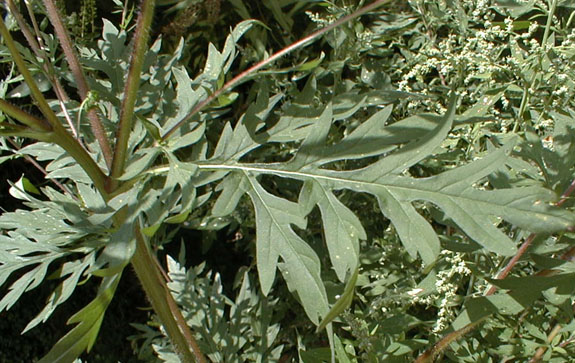Blog

#bioPGH Blog: Ragweed
 A resource of Biophilia: Pittsburgh, #bioPGH is a weekly blog and social media series that aims to encourage both children and adults to reconnect with nature and enjoy what each of our distinctive seasons has to offer.
A resource of Biophilia: Pittsburgh, #bioPGH is a weekly blog and social media series that aims to encourage both children and adults to reconnect with nature and enjoy what each of our distinctive seasons has to offer.
Does the name ragweed have you reflexively reaching for a tissue? It’s no wonder! In late summer and early fall, a single ragweed plant can produce up to one billion grains of pollen, and they are often the culprits when folks’ wonder if they are allergic to goldenrod, since the two are often in found in the same plant communities. Like everything living thing in nature, though, ragweed serves an important purpose, even if it causes us a seasonal sniffle fest. Let’s learn a bit more about this native plant, shall we?

Common ragweed, PA DEP

Ragweed leaves, PA DEP
Ragweeds are members of the Asteraceae family, the family of plants with composite flowers (many teeny flowers that look like one big flower) like daisies and sunflowers. There are at least forty species of ragweed mostly native to North America, but here in PA, our notorious allergy offender is the common ragweed, Ambrosia artemisiifolia. The common ragweed can survive in a wide range of soil conditions, but it does prefer full sun. It also is allelopathic, meaning it produces chemicals that can discourage the growth of other plants around it.
As pesky as we may find it, though, common ragweed is ecologically important. Its seeds are a winter food source for birds, and plenty of insects feast upon the leaves (mammals tend to avoid the bitter-tasting leaves, however.) Ragweed is also one of the first plants to grow on land that has been damaged or otherwise disturbed, which is why we can find it easily along roadsides or old farmlands.
Oddly enough, ragweed is also an example of one our own plants becoming invasive in other parts of the world. The plant was introduced to Europe in the mid-nineteenth century, and it quickly spread. Like here, ragweed creates a seasonal-allergy sniffle fest, and it is expected to spread much faster as climate change assists in distribution — both here and abroad.
Yet even as we reach for our tissues, it’s important to remember that everything in nature has an important role in its system, and other species interact with it and rely on it. This one perhaps doesn’t need to fill our native gardens at home, but we can appreciate it in nature from a distance — maybe a far distance!
Connecting to the Outdoors Tip: No one wants to miss out on outdoor adventures, but teh effects of seasonal allergies are no joke. However, the National Allergy Forecast can help you plan appropriately for outdoor excursions!
Continue the Conversation: Share your nature discoveries with our community by posting to Twitter and Instagram with hashtag #bioPGH, and R.S.V.P. to attend our next Biophilia: Pittsburgh meeting.
Resources
PA DEP: Ragweed Identification
PA Dep: Ragweed Pollen Information
Illinois Wildflowers: Common Ragweed
Photo credits: Cover, flickr user Isfugl CC BY-NC-SA 2.0; Header, Pexels CC0

